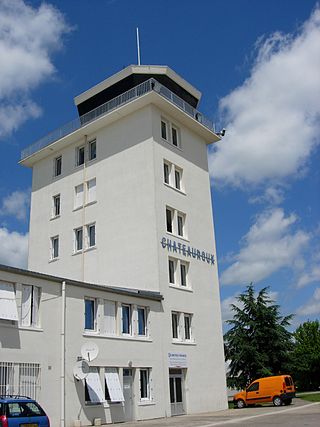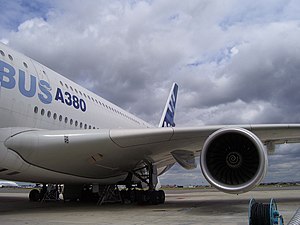
Toulouse is the prefecture of the French department of Haute-Garonne and of the larger region of Occitania. The city is on the banks of the River Garonne, 150 kilometres from the Mediterranean Sea, 230 km (143 mi) from the Atlantic Ocean and 680 km (420 mi) from Paris. It is the fourth-largest city in France after Paris, Marseille and Lyon, with 511,684 inhabitants within its municipal boundaries (2022); its metropolitan area has a population of 1.5 million inhabitants (2021). Toulouse is the central city of one of the 22 metropolitan councils of France. Between the 2014 and 2020 censuses, its metropolitan area was the third fastest growing among metropolitan areas larger than 500,000 inhabitants in France.

The Province of Languedoc is a former province of France. Most of its territory is now contained in the modern-day region of Occitanie in Southern France. Its capital city was Toulouse. It had an area of approximately 42,700 square kilometers.

The Office National d'Études et de Recherches Aérospatiales or ONERA, dubbed The French Aerospace Lab in English, is the French national aerospace research center. Originally founded as the Office National d’Études et de Recherches Aéronautiques in 1946, it was relabeled in 1963.

Toulouse Métropole is one of 20 French metropolises, an intercommunal structure, centred on the city of Toulouse. Located in the Haute-Garonne department, in the Occitanie region, southern France. Created in January 2015, it replaced the previous Communauté urbaine de Toulouse. With an area of 458.2 km2, and a population of 783,353 in 2018, of which 486,828 are in Toulouse proper. It is the 5th largest metropolis after Greater Paris, Aix-Marseille-Provence, Lille-Europe and Bordeaux. The annual budget is €1,4 billion (2015).

École nationale de l'aviation civile is one of 205 colleges accredited to award engineering degrees in France. ENAC is designated as a grande école by the Conférence des Grandes écoles (CGE), a non-profit organisation which certifies and monitors grandes écoles. ENAC was founded on 28 August 1949 to provide initial and continuing education in the field of civil aviation. The school is an établissement public à caractère scientifique, culturel et professionnel, and operates under the oversight of the Ministry of Ecological Transition. Affiliated with the University of Toulouse and Aerospace Valley, it is one of the five founders of France AEROTECH.

Muret is a commune in the Haute-Garonne department, of which it is a subprefecture, in the Occitanie region of southwestern France. Its inhabitants are called Muretains.

The Institut Supérieur de l'Aéronautique et de l'Espace is a French grande école of engineering, founded in 1909. It is the world's first dedicated institute of aerospace engineering. ISAE-SUPAERO is part of University of Toulouse, ISSAT, PEGASUS, GEA, Toulouse Tech, CESAER and Aerospace Valley. The institute is ranked highly among Europe's engineering schools.

Blagnac is a commune of the greater Toulouse area in the Haute-Garonne department in southwestern France. The city hosts the aviation museum Aeroscopia.

The Toulouse Metro is a rapid transit system serving Toulouse Métropole, France. It is the only metro system in Occitania. The city's public transport system was initially managed by the Société d'économie mixte des voyageurs de l'agglomération toulousaine, which was a company 80% owned by local government bodies and 20% privately owned. It has been managed by Tisséo Voyageurs, under the authority of Tisséo Collectivités, also named the Syndicat Mixte des Transports en Commun, an authority established by various local government bodies, since 2003.

Châteauroux-Centre "Marcel Dassault" Airport, formerly known as Châteauroux-Déols "Marcel Dassault" Airport, is an airport serving the French city of Châteauroux. The airport is located 5.5 km (3.0 NM) north-northeast of Châteauroux in Déols, a commune of the Indre department in the Centre-Val de Loire region in France. The airport is named after Marcel Dassault and is located on the site of the former Châteauroux-Déols Air Base. It is dedicated to air freight, aeronautical maintenance, pilot training and training of airport firefighters.

Labège is a commune in the Haute-Garonne department in the Occitania region in Southwestern France.

The Toulouse Space Centre is a research and development centre of CNES. Founded in September 1968, it is located in the Rangueil-Lespinet district of Toulouse in the Haute-Garonne department in the Occitanie region in France. The largest national space center in Europe, CNES is haven to more than 1,700 employees, responsible for the development of most of the work, with the exception of launch vehicles and their launches.
The Derby de la Garonne is a football match contested between French clubs FC Girondins de Bordeaux and Toulouse FC. The derby is so-named because Bordeaux and Toulouse are the two major cities in south-western France, both which are situated on the Garonne River. The consistency and competitiveness of the rivalry developed following Toulouse's return to Ligue 1 after being administratively relegated to the Championnat National in 2001.

Nouvelle-Aquitaine is the largest administrative region in France by area, spanning the west and southwest of Metropolitan France. The region was created in 2014 by the merging of Aquitaine, Limousin, and Poitou-Charentes in a territorial reform. Nouvelle-Aquitaine has an area of 84,035.7 km2 (32,446.4 sq mi) – more than 1⁄7 of Metropolitan France – and has a population of 6,033,952 as of 2020. The new region was established on 1 January 2016, following the regional elections in December 2015.
The following is a timeline of the history of the city of Toulouse, France.

Donecle is a Toulouse-based aircraft manufacturer which develops autonomous aircraft inspection UAVs. The company offers single UAVs and swarms of UAVs to visually inspect the exterior of airliners.

The Toulouse railway network is a railway network in Toulouse metropolitan area in France. Created in 1856, with the opening of the Matabiau station, it has six lines, or eight branches, arranged more or less in a star shape.

Aeroscopia is a French aerospace museum, located at the north-western edge of Toulouse, in the commune of Blagnac. It was opened on 14 January 2015.

Toulouse Aerospace, formerly Montaudran Aerospace or Aerospace Campus, is a campus project linked to the aeronautics, space and embedded systems jobs and part of Aerospace Valley. Located in Toulouse in the Montaudran district, it will be built entirely by the Toulouse Métropole. Its surface area will be 40 hectares on the site of the former Toulouse-Montaudran airport which saw the beginnings of Aéropostale.



















